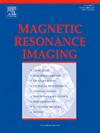MP2RAGE定量T1值与多ti反演恢复T1值的比较与校准。
IF 2.1
4区 医学
Q2 RADIOLOGY, NUCLEAR MEDICINE & MEDICAL IMAGING
引用次数: 0
摘要
虽然典型的定性T1加权磁共振图像反映了扫描仪和协议的差异,但定量T1映射旨在独立于这些影响测量T1。大脑T1的变化反映了脑组织的结构变化。磁化制备的两种快速采集梯度回波(MP2RAGE)是一种采集协议,与多ti反演恢复(IR)协议相比,它允许高效的T1映射,每层扫描时间要低得多。我们收集并记录了b1校正的MP2RAGE采集数据和额外的反演时间(MP3RAGE),以及四个受试者的多ti选择性反演恢复采集数据。我们对MP2RAGE和MP2RAGE使用了最大后验(MAP) T1估计方法,并与典型的MP2RAGE点估计T1映射进行了比较,发现MAP MP2RAGE没有偏差,但对MAP MP3RAGE的B1不均匀性敏感。我们证明了MAP MP2RAGE T1估计值与多ti反演恢复T1值之间存在组织依赖的偏差。为了纠正这种偏差,我们训练了一个基于patch的ResNet-18来校准MAP MP2RAGE T1估计到多ti IR T1值。在四个折叠,我们的网络减少了RMSE显著(白质:从0.30 ±0.01 年代0.11 ±0.02 年代,皮层下灰质:从0.26 ±0.02 年代0.10 ±0.02 年代,大脑皮层灰质:从0.36 ±0.02 年代0.17 ±0.03 s)。利用来自两个序列的有限成对训练数据,我们可以减少定量成像方法之间的误差,并使用神经网络校准其中一个协议。本文章由计算机程序翻译,如有差异,请以英文原文为准。
Comparison and calibration of MP2RAGE quantitative T1 values to multi-TI inversion recovery T1 values
While typical qualitative T1-weighted magnetic resonance images reflect scanner and protocol differences, quantitative T1 mapping aims to measure T1 independent of these effects. Changes in T1 in the brain reflect structural changes in brain tissue. Magnetization-prepared two rapid acquisition gradient echo (MP2RAGE) is an acquisition protocol that allows for efficient T1 mapping with a much lower scan time per slab compared to multi-TI inversion recovery (IR) protocols. We collect and register B1-corrected MP2RAGE acquisitions with an additional inversion time (MP3RAGE) alongside multi-TI selective inversion recovery acquisitions for four subjects. We use a maximum a posteriori (MAP) T1 estimation method for both MP2RAGE and compare to typical point estimate MP2RAGE T1 mapping, finding no bias from MAP MP2RAGE but a sensitivity to inhomogeneities with MAP MP3RAGE. We demonstrate a tissue-dependent bias between MAP MP2RAGE T1 estimates and the multi-TI inversion recovery T1 values. To correct this bias, we train a patch-based ResNet-18 to calibrate the MAP MP2RAGE T1 estimates to the multi-TI IR T1 values. Across four folds, our network reduces the RMSE significantly (white matter: from 0.30 ± 0.01 s to 0.11 ± 0.02 s, subcortical gray matter: from 0.26 ± 0.02 s to 0.10 ± 0.02 s, cortical gray matter: from 0.36 ± 0.02 s to 0.17 ± 0.03 s). Using limited paired training data from both sequences, we can reduce the error between quantitative imaging methods and calibrate to one of the protocols with a neural network.
求助全文
通过发布文献求助,成功后即可免费获取论文全文。
去求助
来源期刊

Magnetic resonance imaging
医学-核医学
CiteScore
4.70
自引率
4.00%
发文量
194
审稿时长
83 days
期刊介绍:
Magnetic Resonance Imaging (MRI) is the first international multidisciplinary journal encompassing physical, life, and clinical science investigations as they relate to the development and use of magnetic resonance imaging. MRI is dedicated to both basic research, technological innovation and applications, providing a single forum for communication among radiologists, physicists, chemists, biochemists, biologists, engineers, internists, pathologists, physiologists, computer scientists, and mathematicians.
 求助内容:
求助内容: 应助结果提醒方式:
应助结果提醒方式:


